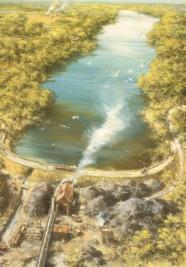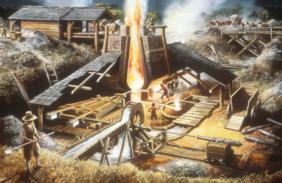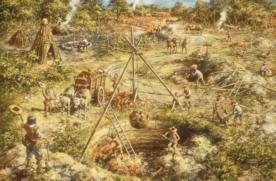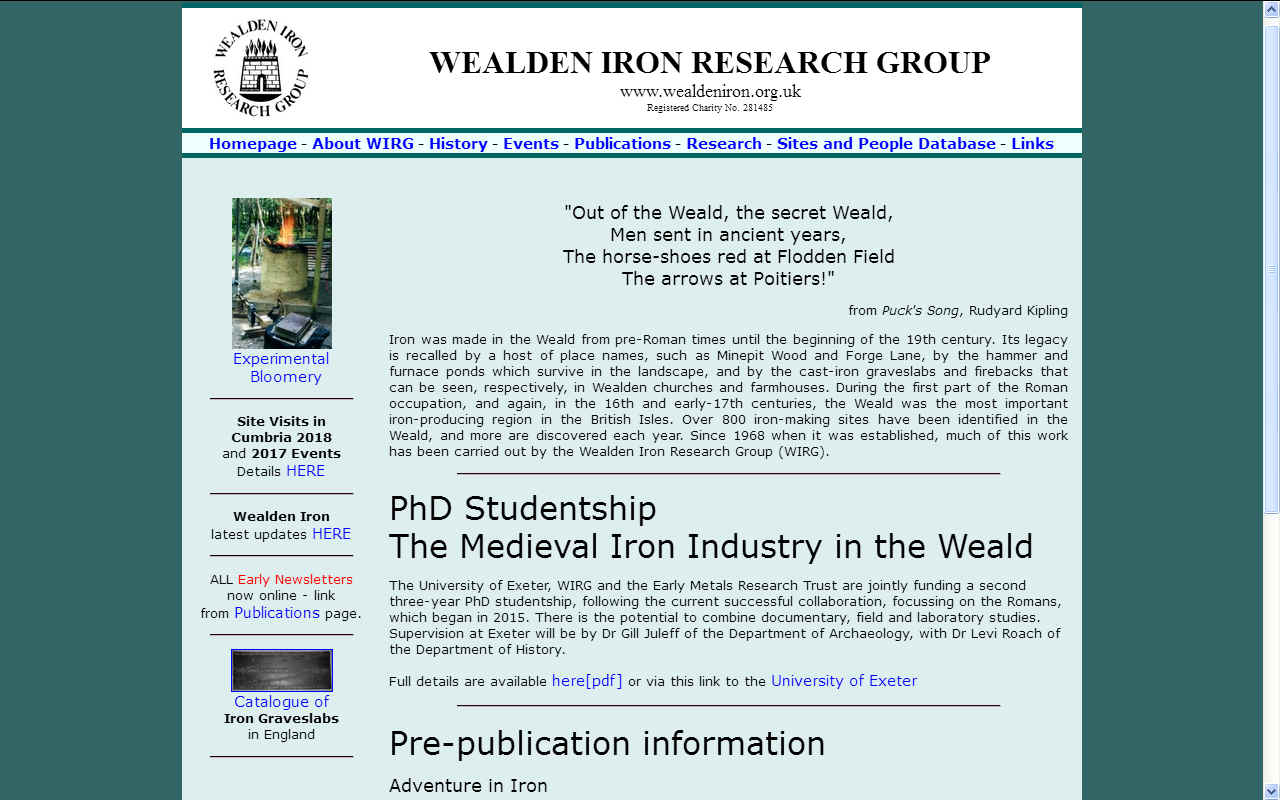|
WEALDEN'S IRON INDUSTRY
|
||||||||||||
|
HOME CUISINE ENVIRONMENT INSURANCE HORSES LEGENDS LAW NEWS PRODUCE RIGHTS SITE INDEX TRANSPORT WHISTLEBLOWING |
||||||||||||
|
IRON - A ONCE GREAT WEALDEN INDUSTRY It is hard to picture the former iron industry in today's countryside of small fields, woodlands and steep, narrow, gill valleys. But in this landscape exist all the necessary raw materials that allowed iron to be smelted for over 2,000 years. There were no planning laws in those days and no planning officers to put a spanner in the works.
For two periods - in the first two centuries of the Roman occupation, and during Tudor and early-Stuart times - the Weald was the main iron-producing region in Britain. Julius Caesar first drew attention to iron being produced in the coastal parts of Britain. Archaeologists have found evidence of iron working from the late Iron Age at sites near Crowhurst and Sedlescombe in the south-eastern High Weald. When the Romans invaded in AD 43, they found a well-established local tradition of iron making, using small, clay bloomery furnaces. With growing markets generated by the building of towns, villas and farms, the Romans encouraged this native industry. Sites from the period have been found all over the eastern part of the High Weald. The 'Classis Britannica', or British Fleet, an imperial supply organization as well as a navy, took a strategic role in iron production. It managed several large smelting sites in the area around Hastings, such as one at Beauport Park, near Battle. This may have produced as much as 30,000 tonnes of iron over 130 years, and a substantial bathhouse was built there for some of the workforce.
Introduced from northern France, and operated by skilled, immigrant workers, the blast furnace was a much larger, and more permanent structure than the bloomery; and instead of a few kilos of iron being made, daily output was nearer a tonne.
By the mid-16th century there were 50 furnaces and forges, and that number had doubled 25 years later. All over the Weald, the iron industry was having an effect, with large numbers of people employed in digging ore, cutting wood and transporting both raw materials and products. Most furnaces made "sows", or lengths, of iron for refining, but from the 1540s a small number began to make cast-iron cannon, a product that grew to be a profitable, and sometimes illegal, export. Improvements in house design led to the building of chimneys, and the need for iron fire-backs to protect the brickwork. Many Wealden farmhouses contain examples of these decorative and functional plates. In several Wealden churches there are examples of iron memorials. The oldest is in Burwash, dating from the 1530s, while Wadhurst church has over 30, dating from the early-17th to the late-18th centuries. As competition from imported iron increased, the Wealden ironmasters began to concentrate increasingly on gun founding, and examples can be found all over the world, wherever Britain fought or traded. Eventually, the onset of the Industrial Revolution took heavy industry north to the coalfields, and the last furnace in the Weald, at Ashburnham, closed in 1813. So, where are the remains of iron production? Building stone was too valuable in the Weald to be left unused, so the works were dismantled, and the woods grew back over the former sites. Only the tell-tale waste, called slag, from the smelting process, and some of the hammer and furnace ponds are left to remind us of a once-great Wealden industry.
THE WEALDEN IRON RESEARCH GROUP The Wealden Iron Research Group was founded in 1968, by Henry Cleere and David Crossley, to update the pioneering work of Ernest Straker whose monograph, Wealden Iron, had been published in 1931. Starting off as a federation of local groups, it coalesced in the early 1970s under the leadership of the late Fred Tebbutt, a distinguished amateur archæologist, who became its first Chairman. Much of the early work of the group centred around the update of Straker's work, but it was soon realised that much lay undiscovered. A survey of an area of the central Weald revealed a dense concentration of early iron smelting sites, or bloomeries, and this has acted as an incentive for future work. Experiments in making iron were started, and the group won the BBC's 'Chronicle' Award for Archæology in 1981. The publication, in 1985, of The Iron Industry of the Weald, by Cleere and Crossley, was the fulfilment of the group's initial aim, but many questions remained unanswered, and the group continues an active programme of research.
LINKS: History and Archeology The Making of the High Weald Sussex Archaeological Society The Sussex Weald CBA SouthEast Romans in Sussex Classis Britannica Metallurgy and Smelting Experimental Iron Smelting at Scatness Experimental Bloomery Site in Wales Whitehall Farm Roman Villa smelting experiments Experimental Iron Smelting at Rievaulx Historical Metallurgy Society Department of Materials Science, Oxford University Museums / Educational The Ironbridge Gorge Museums - Shropshire UK Sowley Ironworks, Hampshire Duddon Furnace, Cumbria The Real Wrought Iron Company The Wilkinson Family, Ironmasters Sites outside UK Forges du Saint Maurice, in Canada Saugus Furnace, Massachusetts, USA Hopewell Furnace, Pennsylvania, USA Maison de la Métallurgie et de l'Industrie de Liège (in French) Lapphyttan Ironworks - Sweden How to join WIRG Membership of WIRG is open to individuals, families and institutions, students and those of pensionable age, and includes a bi-annual Newsletter and the Wealden Iron Bulletin. Activities include a Field Group, which organises a programme of fieldwork in the autumn and winter, bi-annual meetings with visiting speakers, small-scale excavations, and a variety of other projects undertaken by its members. WIRG administers the Tebbutt Research Fund which awards small grants towards research into the Wealden iron industry. The current subscription rates in Sterling are:
You may find out more by emailing Ann Callow. To join WIRG, click HERE for a printable application form. Complete and post it to The Hon. Secretary WIRG, Glazier's Forge Farm, Dallington, Sussex, TN21. 9JJ with your cheque made payable (in sterling) to Wealden Iron Research Group.
* IF YOU HAVE ANY GOOD STORIES, GIVE US A SHOUT*
|



